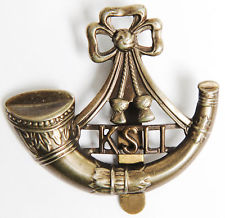Personal Details
Born: 11 June 1884 in Whitchurch, Shropshire and baptised on 21 July the same year in St. Alkmund’s Church.
Family: He was the youngest of four children born to Richard Pace, a gardener, and his wife Mary. He married Elizabeth Ann Jones in 1905 in Whitchurch and together they had four, possibly five, children – Mabel Beatrice, Albert George, Gwendoline, John W and possibly Ambrose.
Residence: His parents were living in Grindley Brook when he was baptised; by 1891 they had moved to Elliott’s Yard, High Street, Whitchurch. In 1901 he was living at 10 Brownlow Street, Whitchurch. In 1911 his wife was living with her mother, siblings and two of her children at 35 Yardington, Whitchurch. The 1919 Absent Voters’ Register show him living at 46 Yardington. By 1939 he lived at 55 Wayland Road, Whitchurch. He died at Cloverfield Nursing Home, Chester Road, Whitchurch.
Employment: In 1901 he was an errand boy; in 1939 he was a County Council roadman.
Died: In 1969 at Cloverfields, Chester Road, Whitchurch, aged 85, and was buried in Whitchurch cemetery on 19 December the same year.
Military Details
Regiment: King’s Shropshire Light Infantry
Rank: Private
Service Number: 200917
Date of Enlistment: Not known
Date of Discharge: Not known
Reason for Discharge: Not known
Other information: Edwin spent two periods in prison for larceny in 1905/6 and 1912/13.
Edwin was awarded the Campaign Medals (British War Medal, and Victory Medal)

The British War Medal (also known as 'Squeak') was a silver or bronze medal awarded to officers and men of the British and Imperial Forces who either entered a theatre of war or entered service overseas between 5th August 1914 and 11th November 1918 inclusive. This was later extended to services in Russia, Siberia and some other areas in 1919 and 1920. Approximately 6.5 million British War Medals were issued. Approximately 6.4 million of these were the silver versions of this medal. Around 110,000 of a bronze version were issued mainly to Chinese, Maltese and Indian Labour Corps. The front (obv or obverse) of the medal depicts the head of George V. The recipient's service number, rank, name and unit was impressed on the rim.
The Allied Victory Medal (also known as 'Wilfred') was issued by each of the allies. It was decided that each of the allies should each issue their own bronze victory medal with a similar design, similar equivalent wording and identical ribbon. The British medal was designed by W. McMillan. The front depicts a winged classical figure representing victory. Approximately 5.7 million victory medals were issued. Interestingly, eligibility for this medal was more restrictive and not everyone who received the British War Medal ('Squeak') also received the Victory Medal ('Wilfred'). However, in general, all recipients of 'Wilfred' also received 'Squeak' and all recipients of The 1914 Star or The 1914/1915 Star (also known as 'Pip') also received both 'Squeak' and 'Wilfred'. The recipient's service number, rank, name and unit was impressed on the rim.

